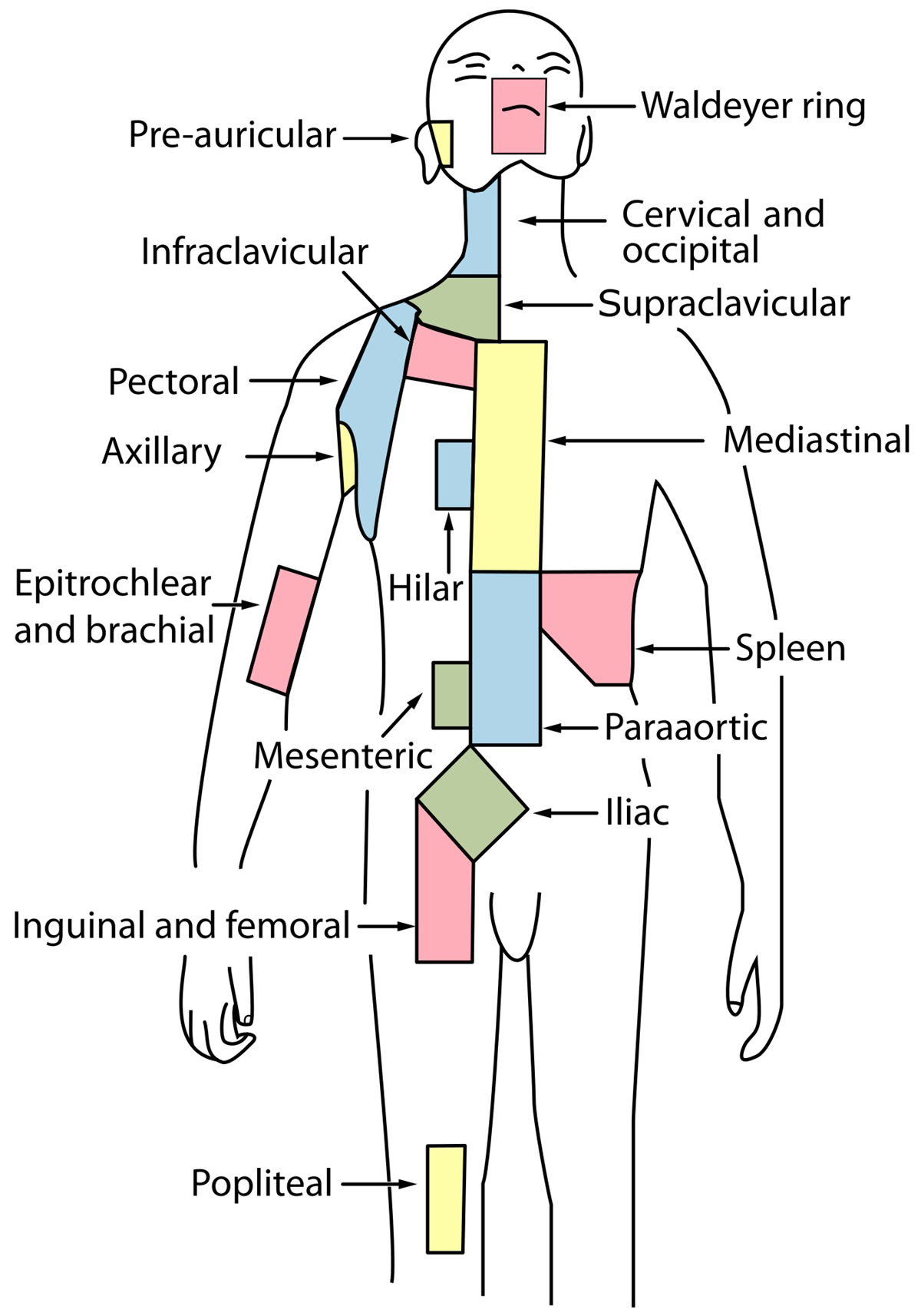


These lymphatic chains are strongly lateralized and typically do not directly communicate between left and right in the absence of a pathologic process. Aponeuroses bind them together with the muscles, nerves, and vessels of the head and neck. The head and neck contains a rich and elaborate lymphatic network of more than 300 nodes and their intermediate channels. A detailed understanding of the principle lymphatic nodal levels of the neck is required, including their anatomical configuration and boundaries, patterns of drainage, and risk of metastatic involvement in the context of malignancy. This knowledge is especially crucial in guiding the approach to proper locoregional therapy, whether by surgery or irradiation. As such, intimate knowledge of the anatomic relationships of the lymphatic nodal levels and the structures they drain is critical in the delivery of appropriate therapy in many patients with cancers of the head and neck. The involvement of specific nodal groups is an indicator of pathologically-affected organs and tissues, especially in the context of malignancy. Lymphadenopathy is a significant clinical finding associated with acute infection, granulomatous disease, autoimmune disease, and malignancy. It is inclusive of osseous, nervous, arterial, venous, muscular, and lymphatic structures. The head and neck, as a general anatomic region, is characterized by a large number of critical structures situated in a relatively small geographic area.


 0 kommentar(er)
0 kommentar(er)
